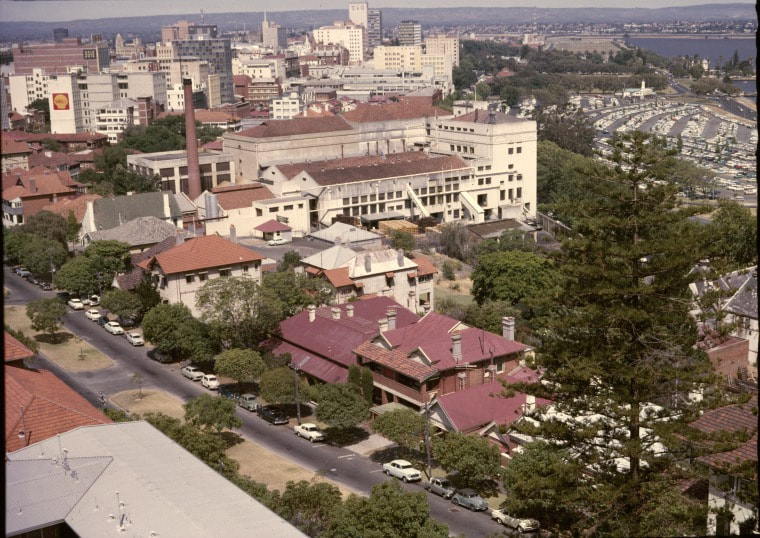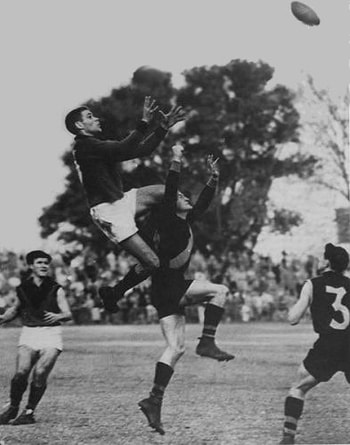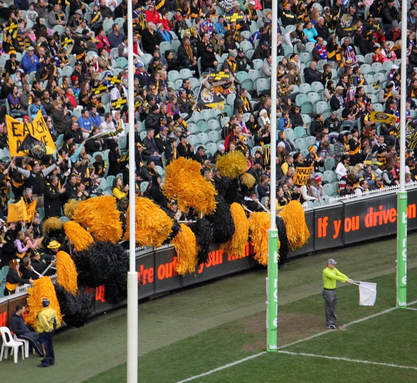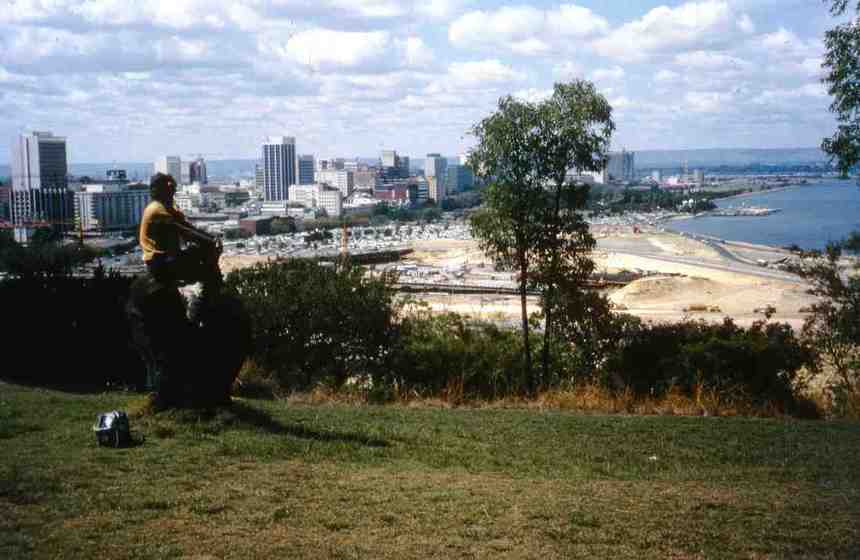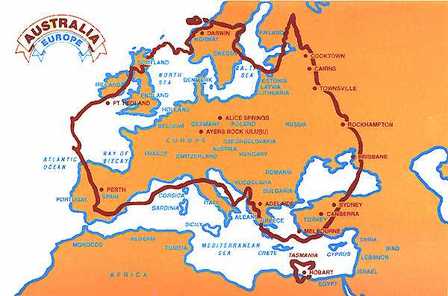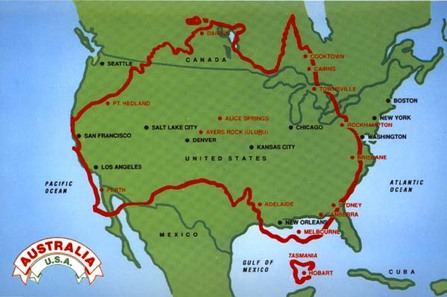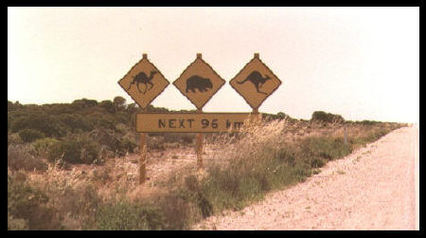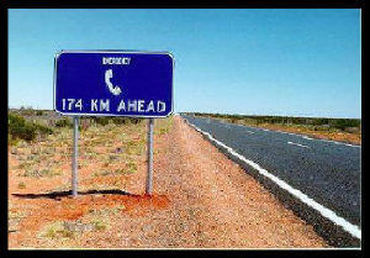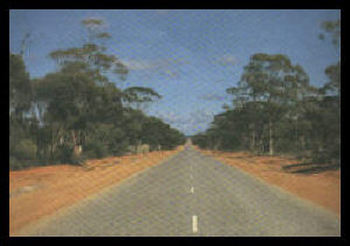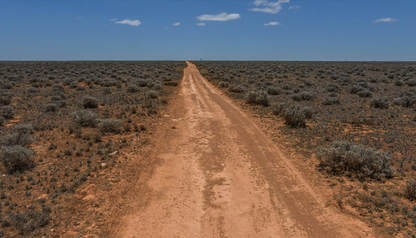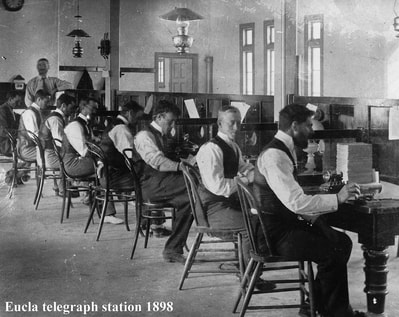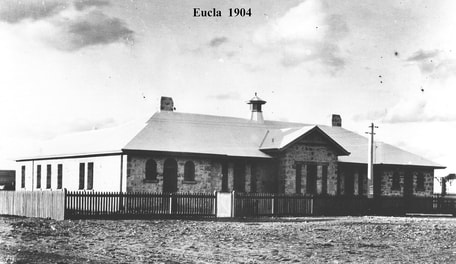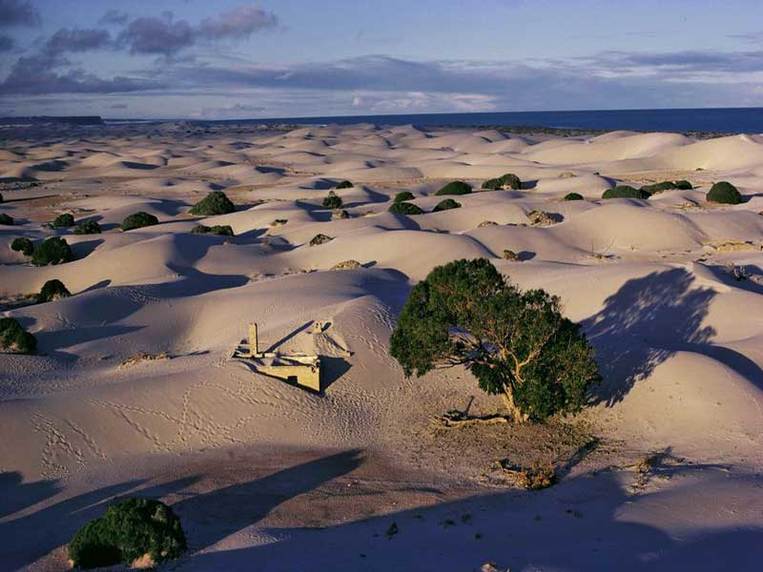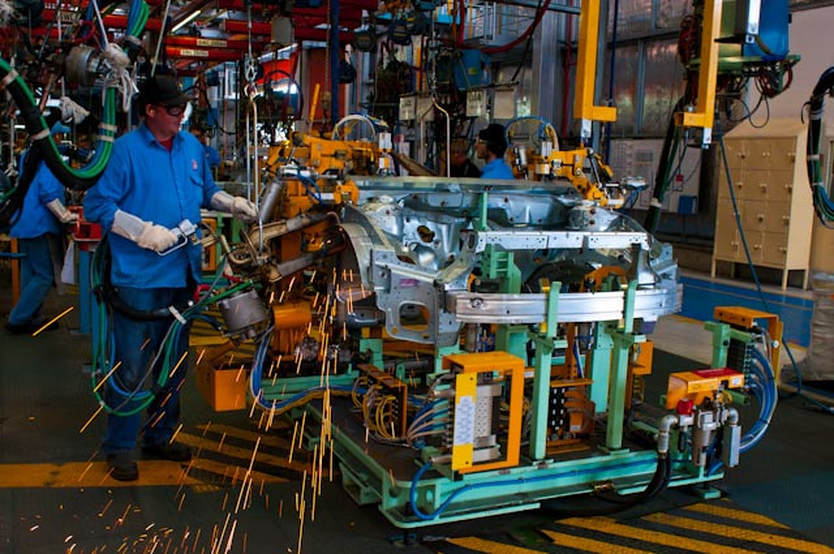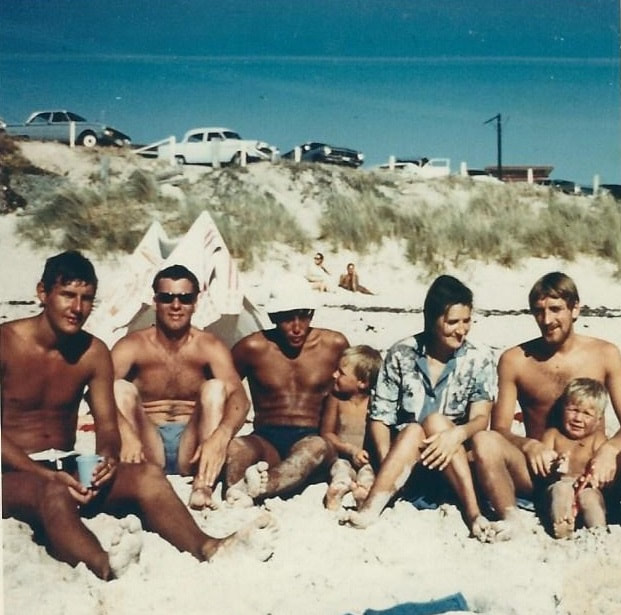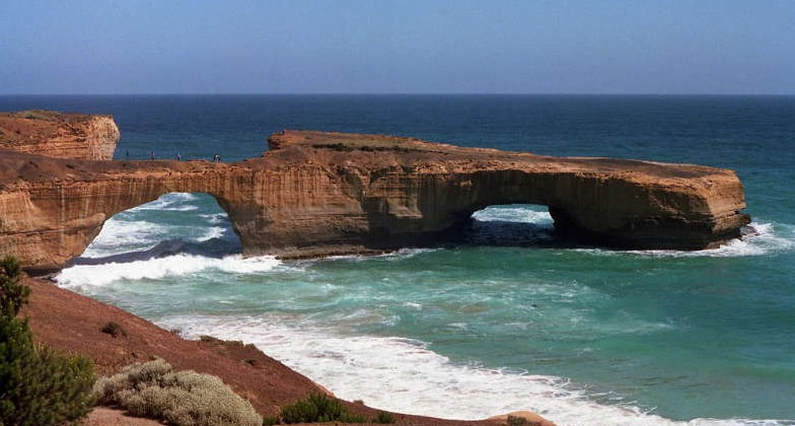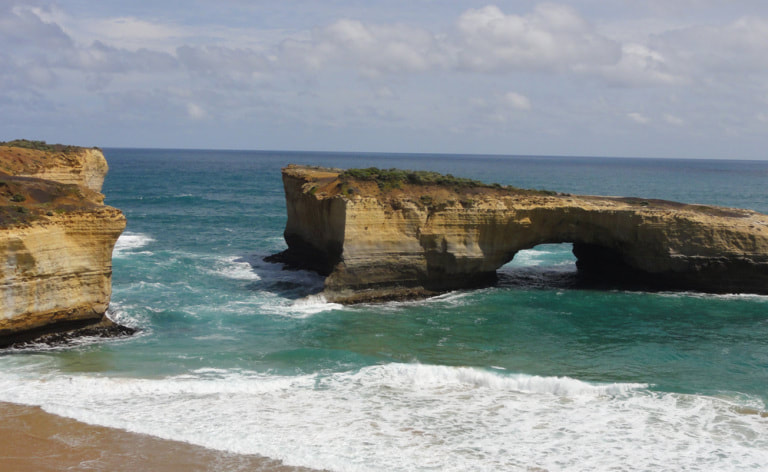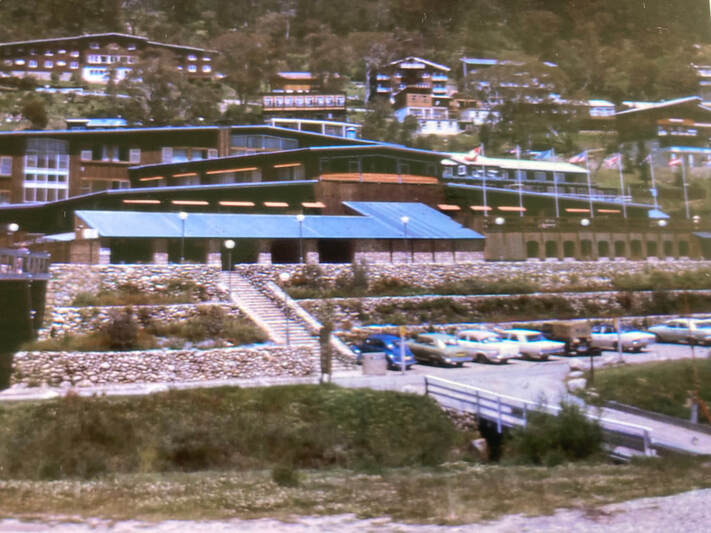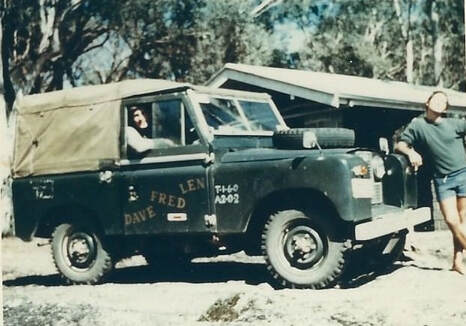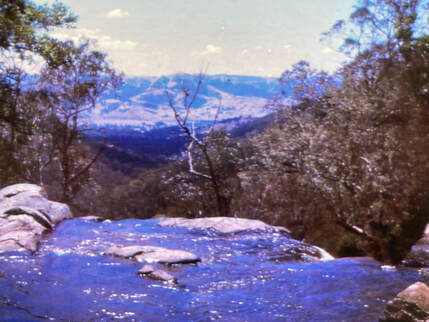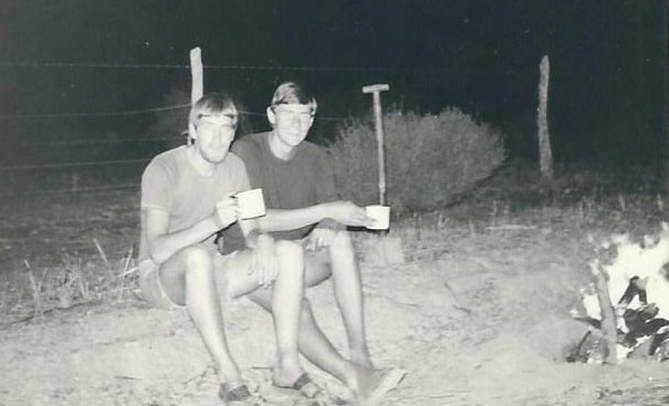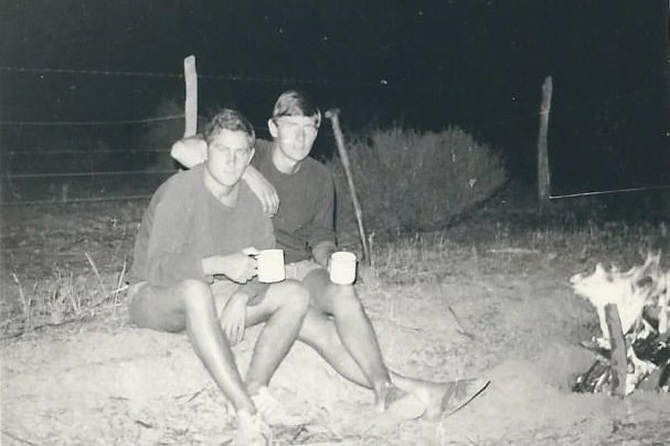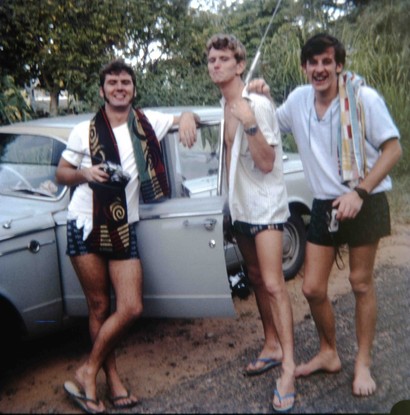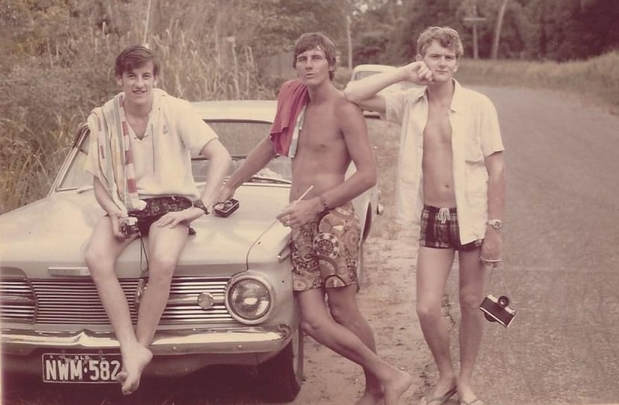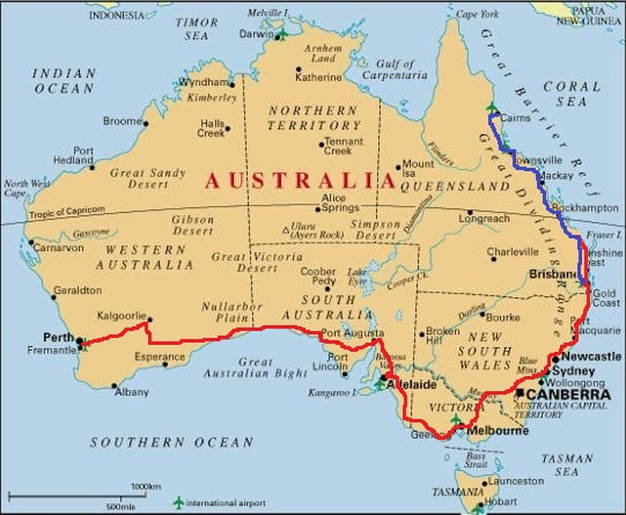
Perth and Beyond
PERTH, WESTERN AUSTRALIA
4.30am, 24th July we arrived from Singapore at Perth Airport. Three exhausted ‘poms’ with little or no idea of what lay in store for us now. We’d made it here, after three months crossing the world, from our home in the ‘old dart’. From Dudley, England to Perth, Australia over land, sea and air, young and naïve when we left, in search of something different, not really knowing what, and now turned into seasoned budget travellers.
DAVE, FRED and LEN said the names on the doors of our SWB Land Rover. Our trusty servant was still in transit somewhere on a dock in Singapore awaiting its own journey to Fremantle, the port city for Perth. We’d parted company with the Land Rover at Bombay (Mumbai), India some four weeks ago and it’ll be here in a month’s time, we hope…
We’d spent most of our remaining monies on the flight out of Singapore and had only A$32 (about £15) left between us. We showered at the airport and roamed the almost empty terminal, waiting for the early bus into Perth city centre. First stop was the main post office, checking the Poste Restante desk for any mail that may have been forwarded on to us. Made enquiries there and at travel outlets in the business area about accommodation and were directed to a men’s only rooming house at the corner of Adelaide Terrace and Hill Street within walking distance of the town centre.
Bert was the live-in manager and he responded to our pleas by taking control of our passports till we stumped up the rent at the end of the following week. Thank God there was plenty of labouring work to chase as long as you got up early to check the morning paper…
The first week was a struggle, as the lack of money forced us to exist for a few days on bread, cheese and apples. We all got a few day’s work at the scrap merchants Krasnostein’s who were demolishing the old gasworks. Had to stay out of the way of the massive crane with ball and chain attached and buggered my hush puppies in all the tar on the concrete.
Our saviour was the Vienna Cafe on William Street, across the railway from Perth’s city centre. There was always a queue out front for the A$1 roast meal with free soup and bread. I think the first night there, we emptied the soup tureen before the meal arrived.
A variety of odd jobs followed, including digging new housing septic pits (none of us could get the hang of the jackhammer in clay!) to shift work at the Emu Brewery. The brewery was just changing its’ production method from large bottles delivered in timber crates to automatic packaging of smaller cans in cardboard cartons. As newbies we all copped the initiation test at the wrong end of the conveyor belt packed with freshly filled bottles. The other six guys on your belt would stop loading their crates and wait for the inevitable. To load the crates you had to knock the bottle off the belt with one hand and catch and twist with the other as you placed them in the crate. The beer was still hot and one wrong move caused the bottles to explode. A good bunch of blokes there though and with a free beer on offer at smoko I was sometimes worse for wear after a 16 hour double shift.
Fred and Dave spotted an ad in the paper for roustabouts on a travelling show, and found themselves heading north of Perth to Geraldton to catch up with the show. Setting up, operating and dismantling a few amusement rides and the usual array of entertainment and food outlets became their life for the next few months. A new town or two every week, they gradually made their way back to Perth for the Royal Agricultural Show in October.
I caught up with them for a few late drinks in Perth for a week while the Show ran there and then they were off again for another month heading south until the show season finished down in Albany.
I stayed in Perth, as someone had to remain and await the arrival of the Land Rover. Its’ six week journey from Bombay would get it to Fremantle in late August.
The brewery work tailed off when they got the packaging plant fully operational and I was lucky to score some regular work as a linesman’s assistant with the Post Master Generals Dept. (a government body running the postal and telecommunications business of the day). I was attached to a few crews installing telephone lines from street to houses. Lots of exercise, fresh air and a tan to boot. I got to know a fair slice of Perth’s and Fremantle’s newer suburbs and with my newly acquired “C” class licence I also doubled as a relief driver.
Perth was a rapidly expanding city with the mining boom underway in Western Australia. Fremantle however hadn’t changed from its convict settlement days, and it wasn’t until the “America’s Cup” was wrestled from the USA in 1983 that it got a facelift. New marinas, docks, hotels, facilities and upgraded tourist industry - all that so they could host the return regatta four years later.
I stayed on at the rooming house, which served a number of itinerant workers and “down and out” souls. Amongst the motley crew was Tommy, a fervent West Perth supporter, dressed constantly in his team’s colours, who introduced us all to the aerial ping pong game of Australian Rules Football. A cross between rugby and Irish Gaelic football. It has cleaned up it’s act now but in those days some of the “hard” men in the game got away with legalized assault and battery (and the crowd cheered…). Tommy had a day job selling bus tickets in the city (Yes, dressed in his outfit) and was a sight to behold heading to a match with his “flogger” over his shoulder. (The flogger being a gigantic pompom on a broomstick which is waved madly when a goal was scored – to this day groups of opposing supporters with these contraptions are camped behind each of the goals) – They’re a weird mob these Aussies….
I caught up with them for a few late drinks in Perth for a week while the Show ran there and then they were off again for another month heading south until the show season finished down in Albany.
I stayed in Perth, as someone had to remain and await the arrival of the Land Rover. Its’ six week journey from Bombay would get it to Fremantle in late August.
The brewery work tailed off when they got the packaging plant fully operational and I was lucky to score some regular work as a linesman’s assistant with the Post Master Generals Dept. (a government body running the postal and telecommunications business of the day). I was attached to a few crews installing telephone lines from street to houses. Lots of exercise, fresh air and a tan to boot. I got to know a fair slice of Perth’s and Fremantle’s newer suburbs and with my newly acquired “C” class licence I also doubled as a relief driver.
Perth was a rapidly expanding city with the mining boom underway in Western Australia. Fremantle however hadn’t changed from its convict settlement days, and it wasn’t until the “America’s Cup” was wrestled from the USA in 1983 that it got a facelift. New marinas, docks, hotels, facilities and upgraded tourist industry - all that so they could host the return regatta four years later.
I stayed on at the rooming house, which served a number of itinerant workers and “down and out” souls. Amongst the motley crew was Tommy, a fervent West Perth supporter, dressed constantly in his team’s colours, who introduced us all to the aerial ping pong game of Australian Rules Football. A cross between rugby and Irish Gaelic football. It has cleaned up it’s act now but in those days some of the “hard” men in the game got away with legalized assault and battery (and the crowd cheered…). Tommy had a day job selling bus tickets in the city (Yes, dressed in his outfit) and was a sight to behold heading to a match with his “flogger” over his shoulder. (The flogger being a gigantic pompom on a broomstick which is waved madly when a goal was scored – to this day groups of opposing supporters with these contraptions are camped behind each of the goals) – They’re a weird mob these Aussies….
I got notification that “Betsy” had arrived on the docks in Fremantle and bussed it down there to check on her. What a shock - after five days of rain before it left Bombay and a further two weeks on Singapore docks awaiting ship changeover in monsoon conditions, the carefully packed rear of the Land Rover was just a sodden stinking mess. The handbrake was seized on and the steering box didn’t feel much better.
Back in Perth I had to arrange a special certificate to get the Land Rover out of customs as it was required to be tested for registration on Aussie roads. Under this certificate I was able to drive it back to my digs. Only got stopped once on the way but the cop was more interested in the journey we’d had to get it here. After some minor repairs, re-assembling the door tops and canvas back, and a service I got it registered OK.
As to the rest of our goods and chattels in the back, most of our clothes washed out to be used again. The tent and camping gear all survived but the Max Lucas package he had entrusted to us with stuff for his son, George, was ruined. Clothes I think and an LP record collection. Sadly we never did contact George over that……and I’ve lost all the contact details for him we would have had. As I write this now I’m really feeling guilty about it – if I can remember after all this time he might too. So that’s a task for me to chase up…
With time on my hands with Fred and Dave absent, I started the process of writing up (longhand) the trip diary based on notes and logbooks we’d produced along the journey from the old dart. Looking back from this time I’m amazed that I seemed to document almost every meal that we consumed. Not sure whether we had this recorded or if I was just trying to flesh out the story. About that time I recall taking a night course in welding, which was a disaster from whoa to go and not a skill I can boast about.
The boys returned from their exploits with the travelling show and we started to make plans for where we would head next. We had a vague plan to see as much of Australia using odd jobs and fruit picking to pay for it. The neighbours across the road from our house back in Dudley had migrated to Australia some years previously and were living in South Australia (Iris Hodgkiss and family). So we contacted her and arranged to catch up with them before Xmas.
Back in Perth I had to arrange a special certificate to get the Land Rover out of customs as it was required to be tested for registration on Aussie roads. Under this certificate I was able to drive it back to my digs. Only got stopped once on the way but the cop was more interested in the journey we’d had to get it here. After some minor repairs, re-assembling the door tops and canvas back, and a service I got it registered OK.
As to the rest of our goods and chattels in the back, most of our clothes washed out to be used again. The tent and camping gear all survived but the Max Lucas package he had entrusted to us with stuff for his son, George, was ruined. Clothes I think and an LP record collection. Sadly we never did contact George over that……and I’ve lost all the contact details for him we would have had. As I write this now I’m really feeling guilty about it – if I can remember after all this time he might too. So that’s a task for me to chase up…
With time on my hands with Fred and Dave absent, I started the process of writing up (longhand) the trip diary based on notes and logbooks we’d produced along the journey from the old dart. Looking back from this time I’m amazed that I seemed to document almost every meal that we consumed. Not sure whether we had this recorded or if I was just trying to flesh out the story. About that time I recall taking a night course in welding, which was a disaster from whoa to go and not a skill I can boast about.
The boys returned from their exploits with the travelling show and we started to make plans for where we would head next. We had a vague plan to see as much of Australia using odd jobs and fruit picking to pay for it. The neighbours across the road from our house back in Dudley had migrated to Australia some years previously and were living in South Australia (Iris Hodgkiss and family). So we contacted her and arranged to catch up with them before Xmas.
With a little bit of savings behind us we were able to relax for a few weeks and see a few sights of Perth and surrounds. Bert from the rooming house, who had looked after us well, drove us up to some National Park to the east of Perth in his pride and joy, an FB Holden station wagon, for a picnic. He didn’t get above 20 mph all day and the enduring memory was of the thousands of flies that tried to get to the food before us.
Whilst we knew that Australia was a bigger place than where we’d come from it wasn’t until we left Perth that we fully appreciated how BIG!!!! For those that have never been here, maybe these comparisons below will give a bit of perspective. Perth is a five and a half hour flight away from Brisbane (where I’ve lived most of my time in Australia). When our family moved to Mt. Isa in the nineties for a few years, the initial road trip took three and a half days and we never got out of Queensland! OK, so we had a couple of young daughters that had to be let out every 100kms or so, but you get the idea…..
Whilst we knew that Australia was a bigger place than where we’d come from it wasn’t until we left Perth that we fully appreciated how BIG!!!! For those that have never been here, maybe these comparisons below will give a bit of perspective. Perth is a five and a half hour flight away from Brisbane (where I’ve lived most of my time in Australia). When our family moved to Mt. Isa in the nineties for a few years, the initial road trip took three and a half days and we never got out of Queensland! OK, so we had a couple of young daughters that had to be let out every 100kms or so, but you get the idea…..
THE NULLARBOR
We kitted out the Land Rover for our onward journey and I said goodbye to the boys at the PMG. Basically only one road to get to South Australia across the Nullarbor Plain, so little chance of getting lost. Of all the previous travelling we’d done across the world I think it was only in Afghanistan that we’d driven more than a hundred miles between major cities. Perth to Elizabeth (near Adelaide where the Hodgkiss’s lived) is 1674 miles (2678 km)!
In all that distance only one city, Kalgoorlie, had a population over 20,000 people – and that due to the 1890s gold rush at nearby Coolgardie. The only other city along our route, Port Augusta (with about 11,000 souls) was at the junction of the two major railways crossing this great continent – The Indian Pacific (Perth to Sydney) and the Ghan (Adelaide to Darwin). The majority of the rest of the communities we drove through struggled to get to three figures, but as long as we could get fuel or food it didn’t matter to us.
Google now tells me if I trundled along at 60 mph I’d do the run across to Elizabeth in twenty eight hours non-stop. We took, I think, four or five days. I can’t be exact because on our travels in Australia we kept no log, so most of this section is my memory and little else. However I can’t imagine us stopping anywhere for any length of time unless it involved fueling, feeding and/ or sleeping. This time we had a camera, but sadly didn’t use it enough, so I’m back to borrowing other people’s snaps of places that I do remember us being in, to back up what little of our photos still remain.
In that pursuit (chasing others’ photos) I’ve come across other websites that do a lot better job describing the countries, conditions and people we experienced than I have done. To that end (if you are interested) I encourage you to check out the “Acknowledgements” Page of this blog for links to those that have helped me with extra photos.
Not a great lot to recall about the trip on the Eyre Highway across to Elizabeth. A lot of miles looking at the ribbon of road sandwiched between Australian native melaleucas or eucalypts which only changed across the Nullarbor Plain with its’ endless flat vista of saltbush shrubs. The road was sealed from Perth through to Norseman. But from there to the Western Australian border it was dirt (sometimes graded, sometimes not) and not sealed until the year after we passed through. This includes one of the longest stretches of straight road in the world, about 111 miles (179 km).
Across the border, South Australia took another seven years to get a paved road to Ceduna. All up that’s about 750 miles (1200 km) of dirt road. Luckily we didn’t fall foul of the potholes hidden by ‘bulldust’ or any of the straying wildlife – around dusk the roos have a habit of waiting till you get close, then starting to cross in front of you and occasionally stopping dead in your path.
Across the border, South Australia took another seven years to get a paved road to Ceduna. All up that’s about 750 miles (1200 km) of dirt road. Luckily we didn’t fall foul of the potholes hidden by ‘bulldust’ or any of the straying wildlife – around dusk the roos have a habit of waiting till you get close, then starting to cross in front of you and occasionally stopping dead in your path.
The road only gets close to the Great Australian Bight at the port of Eucla amongst sand dunes on the border of Western Australia and South Australia. This was the site of a repeater telegraph station, a vital part of the first means of direct communication for Western Australia to the rest of this continent and thus to the world at large.
It’s not my intension to bore you or flood you with miscellaneous information but the background to the repeater telegraph station saga gives a glimpse into the story of white settlement of this country. The development of the states and territories before Federation in 1901 was in the hands of different governors, who adapted the British colonial model to suit their own vast area’s needs, requirements and solution to problems after convict settlement. To this day there are still differences that divide the states, and a reluctance to admit others could have a better way forward. These affect all aspects of life here, but we manage to work with them, despite complicating it with massive migration strategies over many years, giving us a strong functioning multicultural society.
The first inter-colonial telegraph line following the coastal route from Port Augusta (South Australia) to Albany (Western Australia) was completed in 1877. The Eucla manual repeater station was set up as two terminal stations because the two states used different versions of the Morse code. South Australia followed the eastern states of Australia with a variant of the American Morse code and Western Australia had been using the International version of Morse code. One large table ran north-south inside the Eucla station with a timber partition down the middle. A team of South Australian telegraphers would decode messages from the east, pass them through the partition to the West Australian team for re-transmitting to the west. The same thing happened for the opposite traffic.
It’s not my intension to bore you or flood you with miscellaneous information but the background to the repeater telegraph station saga gives a glimpse into the story of white settlement of this country. The development of the states and territories before Federation in 1901 was in the hands of different governors, who adapted the British colonial model to suit their own vast area’s needs, requirements and solution to problems after convict settlement. To this day there are still differences that divide the states, and a reluctance to admit others could have a better way forward. These affect all aspects of life here, but we manage to work with them, despite complicating it with massive migration strategies over many years, giving us a strong functioning multicultural society.
The first inter-colonial telegraph line following the coastal route from Port Augusta (South Australia) to Albany (Western Australia) was completed in 1877. The Eucla manual repeater station was set up as two terminal stations because the two states used different versions of the Morse code. South Australia followed the eastern states of Australia with a variant of the American Morse code and Western Australia had been using the International version of Morse code. One large table ran north-south inside the Eucla station with a timber partition down the middle. A team of South Australian telegraphers would decode messages from the east, pass them through the partition to the West Australian team for re-transmitting to the west. The same thing happened for the opposite traffic.
Far away in Victoria, some 20 years previously, an early settler had released 24 wild rabbits hoping to recreate some reminder of his English home together with a spot of hunting. The rabbits did what rabbits do and over the years the resultant rabbit plague covered the southern half of Australia.
The plague got to Eucla in the 1890’s and proceeded to denude the sand dunes of any vegetation, roots and all. The prevailing winds (which were constant) did their job and gradually the township was being inundated by the dunes. The authorities shipped in a thousand cats in an attempt to sort out the rabbits, and though initially it slowed the rabbits it was too late for the town. It was rebuilt on higher ground but the repeater station soldiered on until the 1920’s and was abandoned only after the advent of electro-magnetic automatic repeaters and an alternate telegraph line built along the Indian Pacific train line one hundred miles to the north.
All that’s left now are some stone walls viewable when the movement of the dunes allow. The rabbits are still with us and so is a massive feral cat problem.
The plague got to Eucla in the 1890’s and proceeded to denude the sand dunes of any vegetation, roots and all. The prevailing winds (which were constant) did their job and gradually the township was being inundated by the dunes. The authorities shipped in a thousand cats in an attempt to sort out the rabbits, and though initially it slowed the rabbits it was too late for the town. It was rebuilt on higher ground but the repeater station soldiered on until the 1920’s and was abandoned only after the advent of electro-magnetic automatic repeaters and an alternate telegraph line built along the Indian Pacific train line one hundred miles to the north.
All that’s left now are some stone walls viewable when the movement of the dunes allow. The rabbits are still with us and so is a massive feral cat problem.
But I digress – back to our story……
All our overnight stops were just off the road, putting the tent up as needed, until we got to Gawler, just north of Elizabeth. There we found the council camping ground in a wooded area next to a stream and headed into town for a pub meal and enjoyed the music and drinking till late on, oblivious to the rainstorm going on outside. Got back to the campsite to find the tent almost floating away and spent a damp night nursing a hangover after quickly moving everything uphill.
All our overnight stops were just off the road, putting the tent up as needed, until we got to Gawler, just north of Elizabeth. There we found the council camping ground in a wooded area next to a stream and headed into town for a pub meal and enjoyed the music and drinking till late on, oblivious to the rainstorm going on outside. Got back to the campsite to find the tent almost floating away and spent a damp night nursing a hangover after quickly moving everything uphill.
ELIZABETH, SOUTH AUSTRALIA
So we were a bit of a mess when we finally dropped in on the Hodgkiss family next morning in Elizabeth North. Iris, God bless her, welcomed us with open arms and after a couple of days of much appreciated hospitality, she encouraged us to extend our stay if we could find work. She had a three bedroom lowset house with her daughter and granddaughter, one room was plenty for us three, and the rent from us made life a bit easier all round. Her son, Robert, was flatting with some mates in North Adelaide and trying to get into the Army.
Iris and Bill (her hubby) had split up not long after their move out to Australia, and her daughter was a single mom.
Many migrant hostels were set up around Australia after the Second World War to process migrants from all over the world. The “ten pound poms” and other nationalities lived free of charge in these hostels (usually converted “Nissan” style army huts with communal kitchens and facilities) while the breadwinners worked and eventually moved their families to a home of their own. Many of the British migrants in South Australia gravitated to Elizabeth, a satellite city 15 miles north of Adelaide, with large industrial complexes nearby requiring large labour forces.
The General Motors Holden car plant, an offshoot of the American General Motors, was one such employer who made and assembled the Aussie “Holden” car. So it didn’t take us long to front up and apply for work as “spot welders”. There was a constant need for new blood on the assembly lines. The job interview with six other fresh faces revolved around start, finish and meal break times, and allocation of safety gear.
The interview culminated in one of the newbies checking that knock off time was at “free furty free”. As I said, bloody poms everywhere.
Don’t know what a spot welder does? Well an endless line of trolleys with skeleton - like car frames would slowly move past your location. You then added a number of smaller sheet metal shapes to the frame in the correct spots and operated a pincer contraption (the spot welder) suspended from an overhead monorail. You grabbed the handle of the welder and navigated the contacts to the loose plates and squeezed, bonding the two bits of sheet metal and spraying out a shower of sparks. Each loose shape got at least two zaps. You barely had time to complete before the next trolley was upon you. Now repeat and repeat and repeat……. And woe betide anybody going slow, or dropping metal in the wrong place before you squeeze that handle.
They did move you around to different assembly lines but the same actions were needed wherever you went. I spent most of my time looking for oil leaks to report to the line manager so we could have another smoko while it got checked out…Mind numbing and boring but it was all about the money.
We stayed with Iris and her family for a couple of months but my time at GMH was interrupted by a medical emergency, with an ambulance rushing me to Adelaide General with acute appendicitis. Thank God that didn’t happen on the Nullarbor….. And why is it that we humans derive so much fun out of making the patient laugh after abdominal surgery?
They did move you around to different assembly lines but the same actions were needed wherever you went. I spent most of my time looking for oil leaks to report to the line manager so we could have another smoko while it got checked out…Mind numbing and boring but it was all about the money.
We stayed with Iris and her family for a couple of months but my time at GMH was interrupted by a medical emergency, with an ambulance rushing me to Adelaide General with acute appendicitis. Thank God that didn’t happen on the Nullarbor….. And why is it that we humans derive so much fun out of making the patient laugh after abdominal surgery?
ON THE ROAD AGAIN
Late April 1970 saw us heading off once again. Fruit picking was again the dream, but our timing was off for the “food bowl of Australia” based around Shepparton in the Goulburn Valley. Their main picking time for apples, pears and stone fruits had just ended. More by accident than intent we travelled to Melbourne, through to Sydney and on to Brisbane and beyond via what are now some of the most popular tourist destinations in Australia.
We headed south from Adelaide through (now world renowned) wine growing areas down to the mouth of the Murray River. We followed the Murray chasing fruit picking opportunities with no luck and headed down to the Great Ocean Road along Victoria’s coast from Warrnambool through to Torquay.
The Great Ocean Road was built after the Great War as a memorial to the forces who made the ultimate sacrifice defending King and Country, in a government inspired work program for returned servicemen. No expense spared apparently….all the explosives, picks, shovels and wheelbarrows they could use……started in 1918 they finally had a single lane road by 1936, at which time the government removed the toll they had been charging users since the first sod was turned. Part in wilderness, but mostly along the edge of limestone cliffs overlooking Bass Strait and the Southern Ocean, the road is now two lane and 240 kms long and services the original small farming communities now overtaken by the tourist dollar.
The eastern section of the road hugs the limestone coast weathered by the seas to form gorges, arches, blow holes and limestone stacks ranging from a few meters to 50 meters tall. We stopped to view many of these along the way. At one formation called London Bridge Fred hopped the fence and sprinted to the far end and back, ignoring the warning signs. It’s now called London Arch as the middle section of the ’bridge’ collapsed many years after we passed through. When it collapsed it trapped a couple who’d done what Fred did, and they had to be helicoptered off the bit left standing.
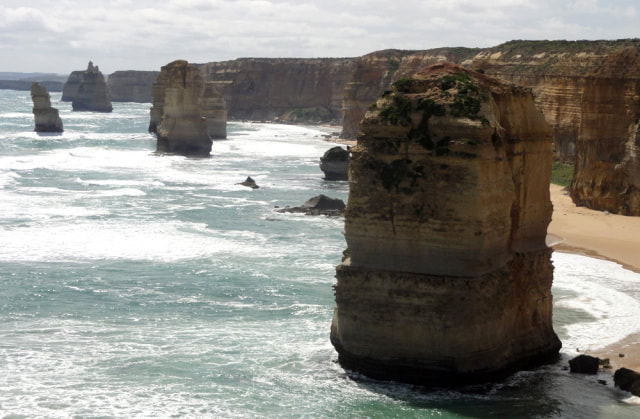
Part view of another group of limestone stacks, christened the “Twelve Apostles” by the Victorian tourist authority before the Second World War. It is one of Australia's most popular tourist attractions. Hard to fathom the name as there were only ever nine of them and due to recent erosion that’s down to eight. The original naming by the English explorers in the late 1700s was 'The Sow and Piglets'. Not as marketable I guess.
We pushed on to Melbourne after a wet night huddled above Bell’s Beach near Torquay (now a favourite of the world’s surfing fraternity). The city of Melbourne had much of the same look and feel of Birmingham back home. I guess the fact that it was still raining helped. We weren’t there long, Poste Restante at the GPO and a few employment agencies that reinforced the lack of fruit picking opportunities in Victoria. We got information on possible work in Queensland and details of contacts in a place called Fortitude Valley in the state’s capital, Brisbane.
So the Land Rover was pointed north and within a week we had made our way through Victoria, the ACT (the nation’s capital, Canberra) and New South Wales and up into Queensland.
So the Land Rover was pointed north and within a week we had made our way through Victoria, the ACT (the nation’s capital, Canberra) and New South Wales and up into Queensland.
.Along the way we’d passed through the Snowy Mountains region near Canberra. We got within coo-ee of Mt. Kosciuszko at Thredbo. (Kosciuszo is pronounced KOS-ee-OZ-co and is the highest point on the Australian mainland). Thredbo is one of the major ski resorts in the high country during winter. No snow for us though this time of the year – January is summer over here, but still cold sleeping in the back of ‘Betsy’. I'll let you 'google' coo-ee yourselves, just one of the multitude of Aussie vernacular sayings I've had to come to grips with over the years.
In Sydney we caught a glimpse of the nearly completed Opera House from the Sydney Harbour Bridge, had a quick dip in the Pacific Ocean at Bondi Beach and then pushed on up the coast through a succession of smaller towns with lakes, rivers and beaches galore.
The weather was hotting up as we crossed the Queensland border. The encouragingly named Fortitude Valley was in fact an older Brisbane suburb near the riverfront at the seedier end of town. Populated with older shops, night clubs, strip joints, theatres and a heap of restaurants where English wasn’t the first language. The contacts we’d got from Melbourne directed us further up the coast to tobacco, pineapple, banana and other farms with crops we’d never heard of before.
We were having lunch in Caboolture, just north of Brisbane, when Fred got talking to a guy who turned out to be connected to the local council. Through him we got a few day’s work at the Council Quarry. They were supplying rocks for foundations of a new bridge to Bribie Island. We camped in the town showgrounds. One day’s hard toil hand splitting rocks with chisels and sledges was thankfully followed by three days of rain. Was just enough to start enjoying drinking billy tea and playing cards with the other crew before they finally moved us on.
The weather was hotting up as we crossed the Queensland border. The encouragingly named Fortitude Valley was in fact an older Brisbane suburb near the riverfront at the seedier end of town. Populated with older shops, night clubs, strip joints, theatres and a heap of restaurants where English wasn’t the first language. The contacts we’d got from Melbourne directed us further up the coast to tobacco, pineapple, banana and other farms with crops we’d never heard of before.
We were having lunch in Caboolture, just north of Brisbane, when Fred got talking to a guy who turned out to be connected to the local council. Through him we got a few day’s work at the Council Quarry. They were supplying rocks for foundations of a new bridge to Bribie Island. We camped in the town showgrounds. One day’s hard toil hand splitting rocks with chisels and sledges was thankfully followed by three days of rain. Was just enough to start enjoying drinking billy tea and playing cards with the other crew before they finally moved us on.
So back on the road north, but with a lot less enthusiasm, we resolved to give it another week and then come back to Brisbane if nothing eventuated. Got as far as Bundaberg with a few knockbacks before we threw the towel in. The camping ground we stayed in on the coast at Bargara was all agog with turtles laying eggs on the beach nearby. Tourists come a long way to view that now.
BRISBANE, QUEENSLAND
So back to Brissy we drove and found a place to stay at the Brisbane City Caravan Park at Hawthorne on the Brisbane River. It’s not there anymore, nor are the boat repair yards and big commercial laundry that was next door, all now replaced with multi-million dollar houses with river frontage. It was just upstream of the Hawthorne Ferry stop in Hardcastle Park and opposite the HMAS Moreton Naval Training facility at Teneriffe - which has also been replaced with the help of the real estate developers.
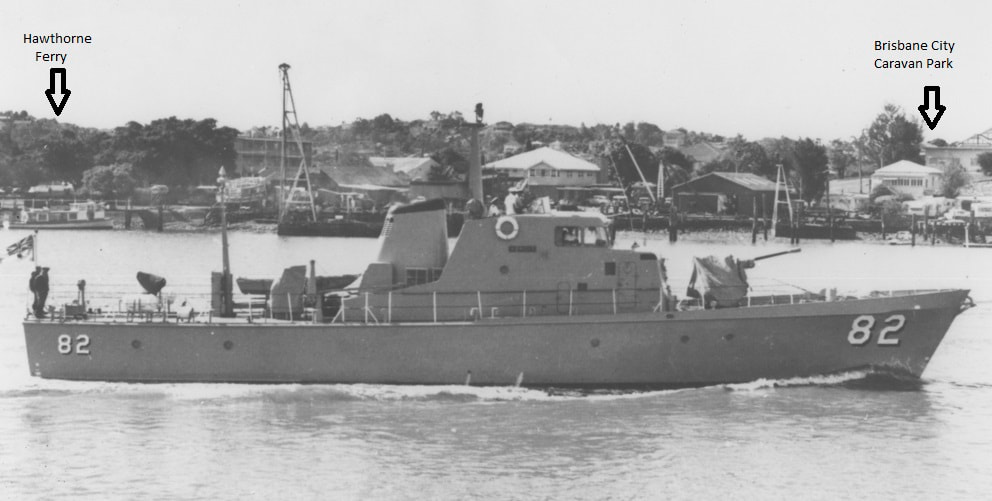
Couldn't believe my luck when I came across this photo. Finding some info on the Brisbane Caravan Park was as scarce as hen's teeth. And then a search of the naval base across the river turned up this picky.
Forgive me if I don't know what the vessel is other than one of the training fleet used at the base. It's the backdrop that had me tripping down memory lane. The ferry stop and ferry shown of course have all been upgraded now but the boatyards and caravan park are long gone under the developer's gavel. We rented one of the onsite vans shown at the right of picture.
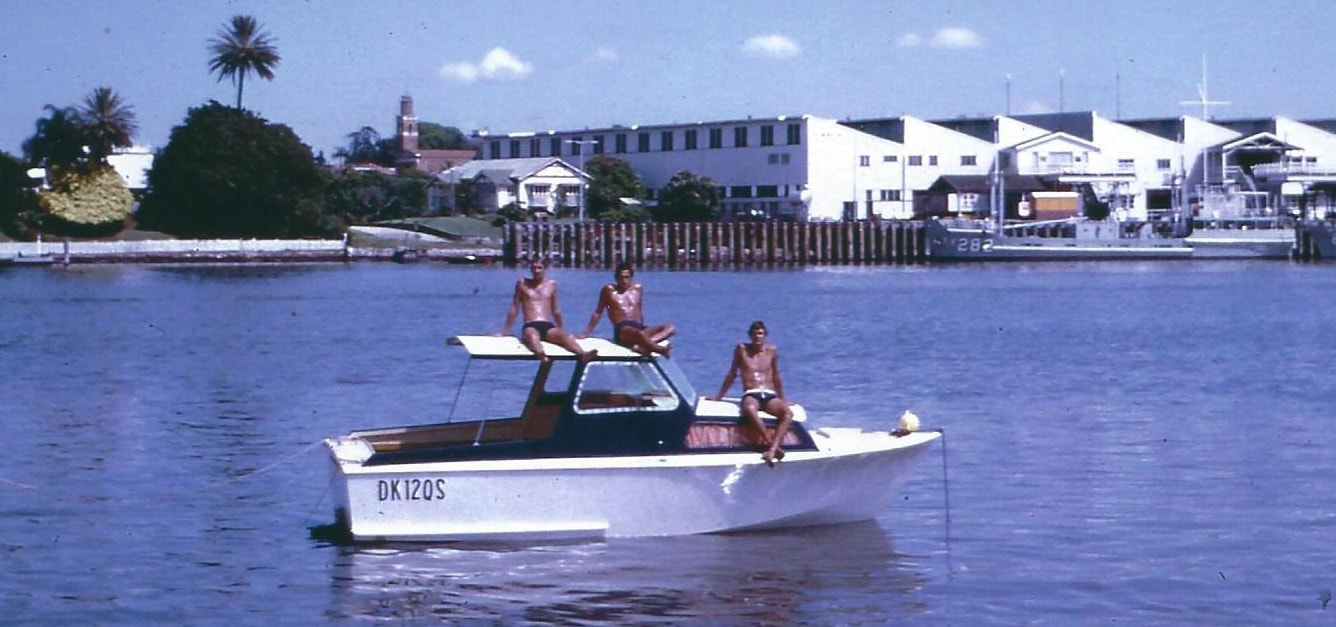
The view looking back across the river to the Naval Training Base. We and others at the park used the river as our own private swimming pool. Swimming in the Brisbane River these days is a no-no, too much rubbish, quicksand-like mud and the odd shark. Don't know whose boat we got on for the photo, probably moored at the boatyards for repairs. As you will read later this activity gave me some grief.....
I found work at nearby Bulimba at Panelfab, building accommodation and office “dongas” for the construction and mining industry. Fred and Dave got a short term contract with the dairy and milk producer Pauls, in charge of gardening and clean up at their south-side depots. I could walk to work and the boys had the use of “Betsy”.
We met and socialised with a lot of the permanents at the park, and everybody was upset when told that the place was selling out and that we’d have to move on.
It coincided with a split with the three of us. Fred and Dave wanted to continue seeing more of Queensland and I wasn’t that keen. So we decided to sell the Land Rover and go our separate ways. “Betsy” went to a guy out Dalby way and I hope he gave her a good home. She’d served us well across the world and deserved it.
We’ve reconnected in later years and they tell me that the two of them hitch-hiked around Queensland for a couple of months and made their way back to the UK in different directions – Dave via the USA and Fred going thru South America and South East Asia. Dave now divides his time between homes in the Midlands and the south of Italy. Fred has been happily married for many years to his Japanese wife living in Hokkaido. They’ve got three kids and he is either organic farming or skiing depending on the weather.
Of course my story didn’t end either when the three of us split up.
One of the families we had befriended at the caravan park were moving to a rental house in Bulimba and I scored a room to myself with them. A week later with my urine a bright orange, my skin a distinct yellow hue and unable to walk ten yards without sitting down, they bundled me off to the Princess Alexandra Hospital.
HEPATITUS or something like that, I don’t think the docs were ever sure. They blamed me for swimming in the Brisbane River at the caravan park amongst the pollution from the adjacent boat repair yards.
They weren’t taking any chances in hospital, their idea of quarantine for this off-coloured Pom was keeping the beds around me free of other patients and letting all my dirty dishes pile up next to me – for two weeks! A dairy free diet and a few drugs and I did improve enough to get discharged. Alas the family wouldn’t have me back (who could blame them, they had a couple of young kids) – guess I’m lucky they hadn’t burnt my remaining clothes.
So I found a single-men’s rooming house in New Farm and a bicycle at an auction so I could get over the ferry to work. The park next to work had a football pitch so I joined up with Southside Eagles for some light exercise. As my old buddies from Dudley will remember, my skills on the football field revolve around standing on the right leg and swinging the left one…there’s been some improvement but suffice to say that I’ve had a long and enjoyable career with the reserve sides of all the clubs I played with, ha-ha.
We met and socialised with a lot of the permanents at the park, and everybody was upset when told that the place was selling out and that we’d have to move on.
It coincided with a split with the three of us. Fred and Dave wanted to continue seeing more of Queensland and I wasn’t that keen. So we decided to sell the Land Rover and go our separate ways. “Betsy” went to a guy out Dalby way and I hope he gave her a good home. She’d served us well across the world and deserved it.
We’ve reconnected in later years and they tell me that the two of them hitch-hiked around Queensland for a couple of months and made their way back to the UK in different directions – Dave via the USA and Fred going thru South America and South East Asia. Dave now divides his time between homes in the Midlands and the south of Italy. Fred has been happily married for many years to his Japanese wife living in Hokkaido. They’ve got three kids and he is either organic farming or skiing depending on the weather.
Of course my story didn’t end either when the three of us split up.
One of the families we had befriended at the caravan park were moving to a rental house in Bulimba and I scored a room to myself with them. A week later with my urine a bright orange, my skin a distinct yellow hue and unable to walk ten yards without sitting down, they bundled me off to the Princess Alexandra Hospital.
HEPATITUS or something like that, I don’t think the docs were ever sure. They blamed me for swimming in the Brisbane River at the caravan park amongst the pollution from the adjacent boat repair yards.
They weren’t taking any chances in hospital, their idea of quarantine for this off-coloured Pom was keeping the beds around me free of other patients and letting all my dirty dishes pile up next to me – for two weeks! A dairy free diet and a few drugs and I did improve enough to get discharged. Alas the family wouldn’t have me back (who could blame them, they had a couple of young kids) – guess I’m lucky they hadn’t burnt my remaining clothes.
So I found a single-men’s rooming house in New Farm and a bicycle at an auction so I could get over the ferry to work. The park next to work had a football pitch so I joined up with Southside Eagles for some light exercise. As my old buddies from Dudley will remember, my skills on the football field revolve around standing on the right leg and swinging the left one…there’s been some improvement but suffice to say that I’ve had a long and enjoyable career with the reserve sides of all the clubs I played with, ha-ha.
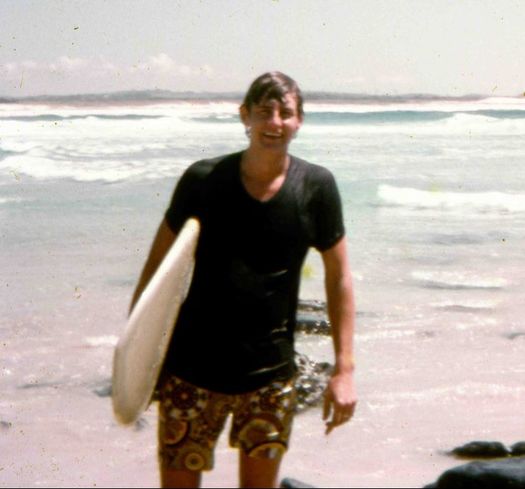
One of my workmates at Panelfab was a mad-keen surfer - long bleached hair, A1 tan, two surfboards atop a panelvan with mattress in the back, and somewhat questionable weekend exploits at the beaches south of Brissy at the Gold Coast and over the border on the Tweed. He had friends who were building their own surfboards. The long boards (Hawaii style) were being slowly replaced with shorter, more manoeuvrable boards at this time.
Yours truly thought that it was a great idea when the guy offered to help build me one and I didn’t do a bad job of shaping the foam block and fibre-glassing the board. Alas, something wrong with the size of the board meant that it usually sank before I could get up on it…..or maybe it was the operator! Still it looked good on the roof racks and basically only got wet when it rained.
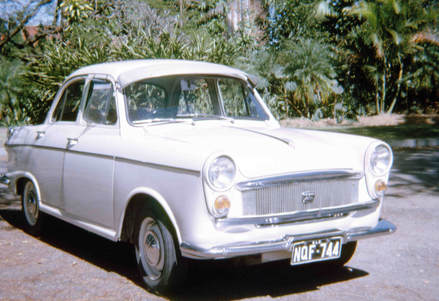
It took just a few months of the single life to realise that the old travelling ‘bug’ hadn’t left me, so the search was on for a replacement to the bicycle. After a couple of disastrous choices in cheap second hand cars I finally settled on an Austin Lancer which was nothing flash but didn’t miss a beat for the next few years up and down the east coast of Australia.
CAIRNS, NORTH QUEENSLAND
So after Xmas 1970 I packed the car and headed north to check out the Great Barrier Reef along the Queensland coast. Not too many roads directly on the beach as I remember so lots of long hours spent driving through the scrub. Australian native trees that can survive the dry and the heat of the Queensland weather don’t tend to be as attractive as the traditional English trees I grew up with in Dudley.
Two or three days travel, kipping in the back of the car in laybys, probably wasn’t the safest plan for a single guy. There were reports at the time of hitch-hikers and travellers being assaulted in some of the more remote stretches of the Bruce Highway so I kept near to civilisation overnight. I think Cairns may have been a ‘dart in the map’ choice for me to head for, but once there, fate took a hand and reinforced the ‘small world’ adage.
Late afternoon found me at the Cairns Esplanade with intensions of a few coldies at the hotel over the road which was advertising dance music for that evening. A quick clean up at the beachside conveniences and a fresh shirt had me heading for the bar. On the way to get a drink I hear the unmistakable dulcet tones of a Yorkshire accent from two guys leaning over the jukebox and there are Lufus and Ian (two of the LWB crew I’d last seen in Singapore almost a year and a half ago). A third member of the crew, Graham was back at their lodgings and in no time at all we’d organised a rental place for the four of us in Grafton Street close to the city centre.
The boys had spent some time working in Perth together, losing contact with Irish Bob almost as soon as they got there. They’d gone their separate ways after a while, but kept in contact and had only recently got back together here in Cairns. Graham had work as a mechanic (I think on outboards at this time), Ian had returned to his trade as a panel beater, and Larry, who had spent most of his time since Perth buffalo shooting in the bush south of Darwin, was now working as a butcher.
Larry? I hear you cry….well so the story goes, he was christened Louvain and when we first met him he was nicknamed Lufus, but he now had aussified that to Larry. Simple yeah.
Cairns in the southern summer, being in the tropics, gets hot, humid and sticky after the wet season. Many of the older members of the population escaped south to beat the heat, but to four young Englishmen the sun, sea and sand was just one long holiday.
I found employment at timber mill operators Hancock and Gore as a tailor out. Logs up to two feet diameter were discharged from the timber trucks to a chain feed bed and the sawyer and I aligned and clamped them onto trolleys for feeding into the circular saw. The gloves supplied didn’t stop the wet timber stains getting on my hands. The stains didn’t wash off, and the first lot took weeks to wear off. I experimented with various rubber gloves under the cotton ones which left me with pink wrinkly hands. I copped a bit of ribbing from the crew there but it made all the difference to my acceptance rate asking for dances at the pub later.
We stayed together for six months or so enjoying the lifestyle that Cairns offered. It is still a tourist mecca for Aussie and overseas visitors, with access to the top end of the Great Barrier Reef at nearby Green Island and as a jumping off point for the Daintree rainforests, Barron Falls, Karunda and the Atherton tablelands. A lot of the tourist industry was still in its infancy, but the big crocs on show at Hartley’s Creek Crocodile Farm dampened your enthusiasm for exploring the outback unsupervised.
EPILOGUE
With winter approaching it was time to move on again, Larry was hoping to re-kindle an old relationship with a girl in Melbourne and I tagged along with him and we wished the other two boys well. After driving all that way in separate cars (almost 3500 klms) Larry’s hopes were well and truly dashed so he headed back to Darwin and the bush, chasing the buffalo. I got work with the PMG (remember Perth) workshops in South Melbourne supervising suburban telephone box installations. And that just because I had a certificate to my name. All the blokes under me who really knew the job were good enough to put up with me.
I’d had enough by Xmas that year, 1971, and decided to go back to England. I’d been in touch with Larry and he was also heading back to Halifax, Yorkshire. I drove to Elizabeth and left the car with the Hodgkisses then flew to Darwin for a few days with Larry before we set off for blighty. Unbelievably we ran into Graham at our overnight hotel in Singapore. Now what were the chances of that happening without trying?
Well, didn’t mom and dad get a shock when I turned up on the doorstep unannounced. They couldn’t wait to get me over to the local and show off their long lost son to the regulars. I got some temporary work back at Round Oak Steel but couldn’t settle, Dave and Fred were both out of the country. My other good mate, Ada, was now living and working in the States, and the feelings of “being stuck in the groove all the way to the grave” future that had got me away from England three years ago were resurfacing.
After a visit to Halifax for a birthday party with Larry and Graham, plans were made to head for Australia again. The Austin Cambridge I’d bought off one of dad’s workmates to get around in, was left with dad (his first and only car) and in March 1972 Larry and I flew back to the land down under. Larry went back to Darwin and I found my way back to Brisbane.
This saga has to end some place and this is as good as any.
Within a few short years of returning to Brisbane I met and married Gayle and as they say in the classics – the rest is history, well more accurately it’s his story and her story. Stories for another day…….
Hope you have enjoyed the ride
Len Hunt
